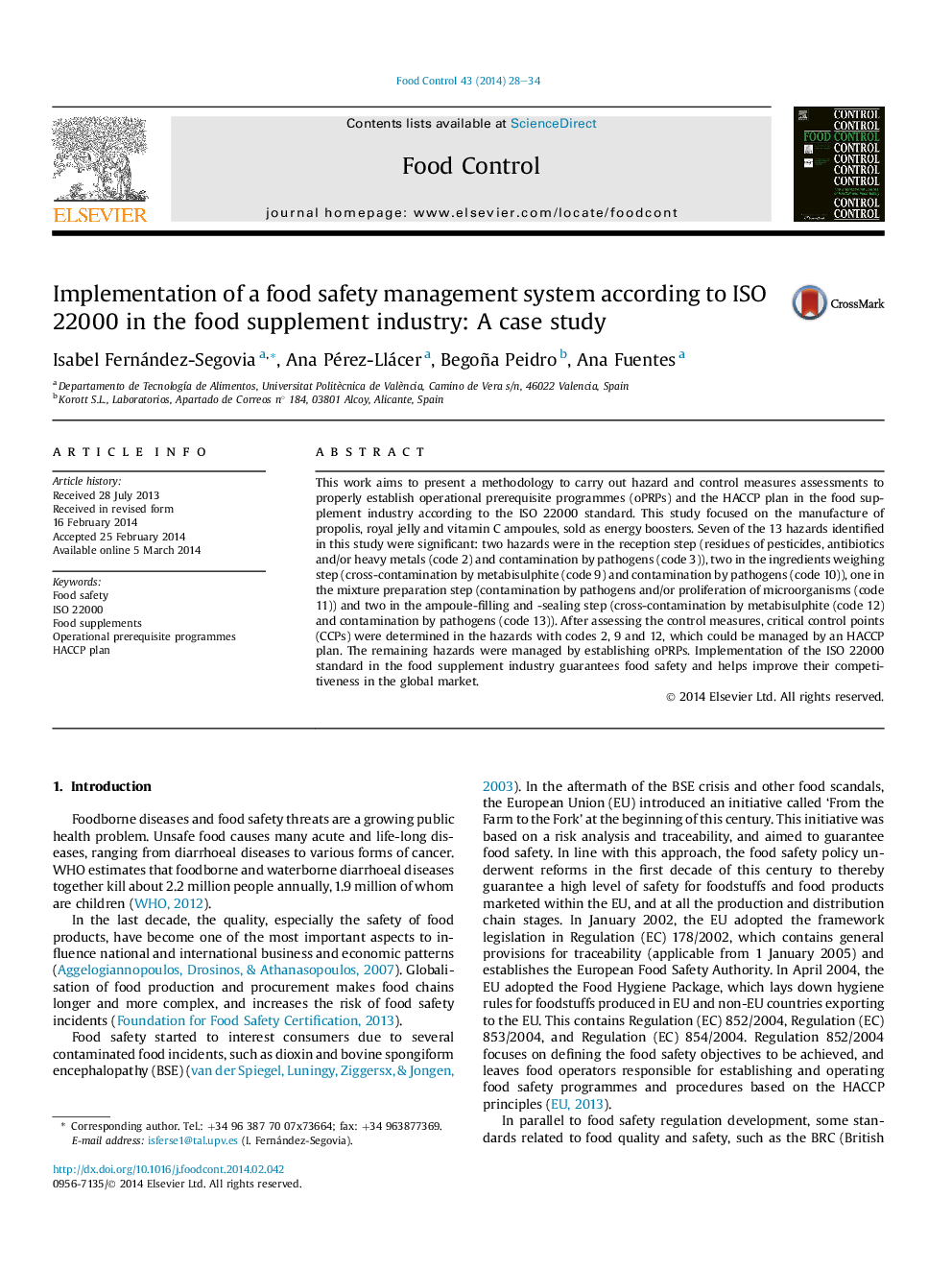| Article ID | Journal | Published Year | Pages | File Type |
|---|---|---|---|---|
| 6391743 | Food Control | 2014 | 7 Pages |
â¢A methodology to perform hazard and control measures assessments is shown.â¢The work was done on propolis, royal jelly and vitamin C ampoules processing line.â¢Seven of the thirteen hazards identified in this study were significant.â¢The critical control points determined in three hazards were managed by HACCP plan.â¢The other four hazards were managed by operational prerequisite programmes.
This work aims to present a methodology to carry out hazard and control measures assessments to properly establish operational prerequisite programmes (oPRPs) and the HACCP plan in the food supplement industry according to the ISO 22000 standard. This study focused on the manufacture of propolis, royal jelly and vitamin C ampoules, sold as energy boosters. Seven of the 13 hazards identified in this study were significant: two hazards were in the reception step (residues of pesticides, antibiotics and/or heavy metals (code 2) and contamination by pathogens (code 3)), two in the ingredients weighing step (cross-contamination by metabisulphite (code 9) and contamination by pathogens (code 10)), one in the mixture preparation step (contamination by pathogens and/or proliferation of microorganisms (code 11)) and two in the ampoule-filling and -sealing step (cross-contamination by metabisulphite (code 12) and contamination by pathogens (code 13)). After assessing the control measures, critical control points (CCPs) were determined in the hazards with codes 2, 9 and 12, which could be managed by an HACCP plan. The remaining hazards were managed by establishing oPRPs. Implementation of the ISO 22000 standard in the food supplement industry guarantees food safety and helps improve their competitiveness in the global market.
